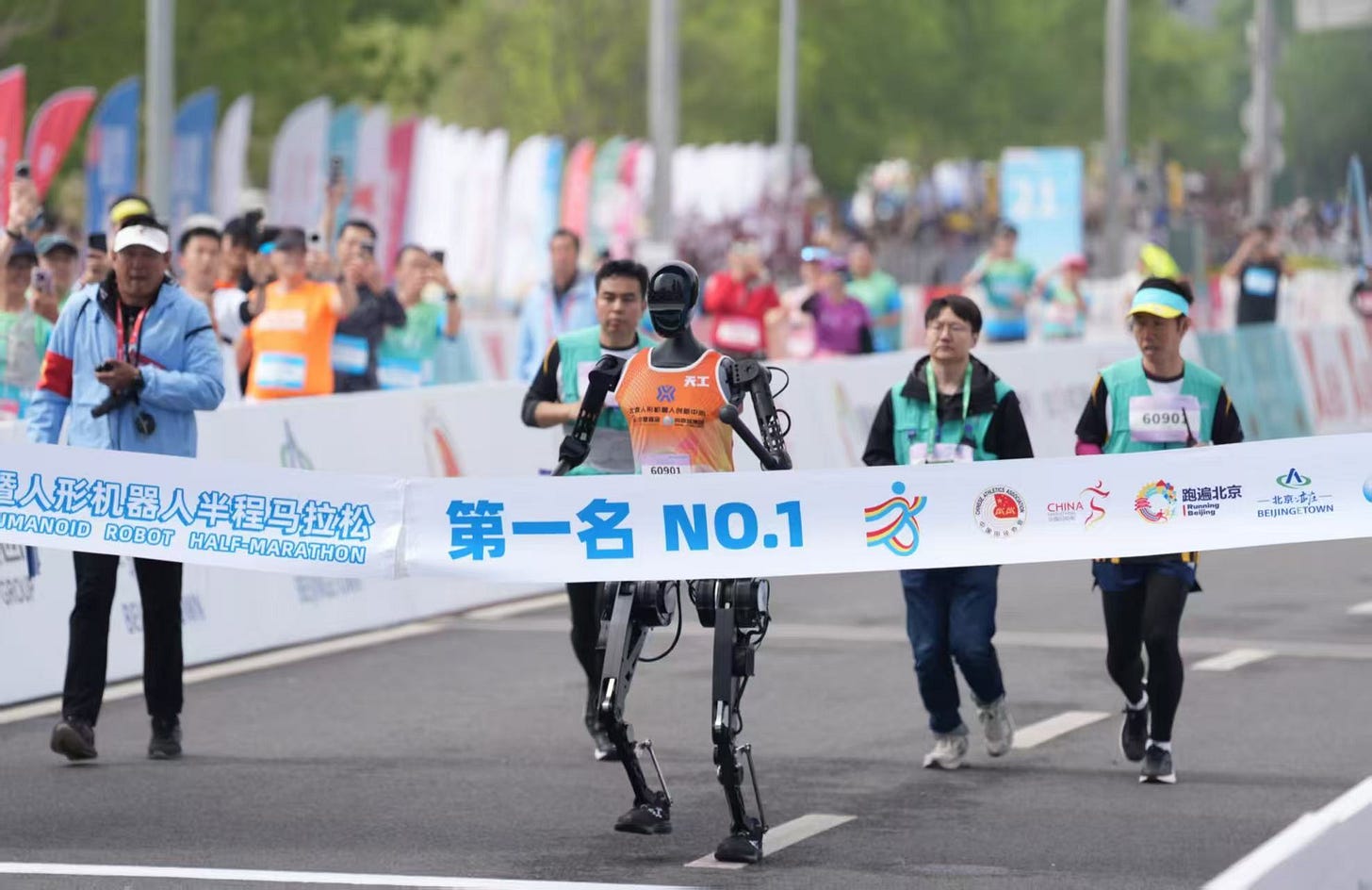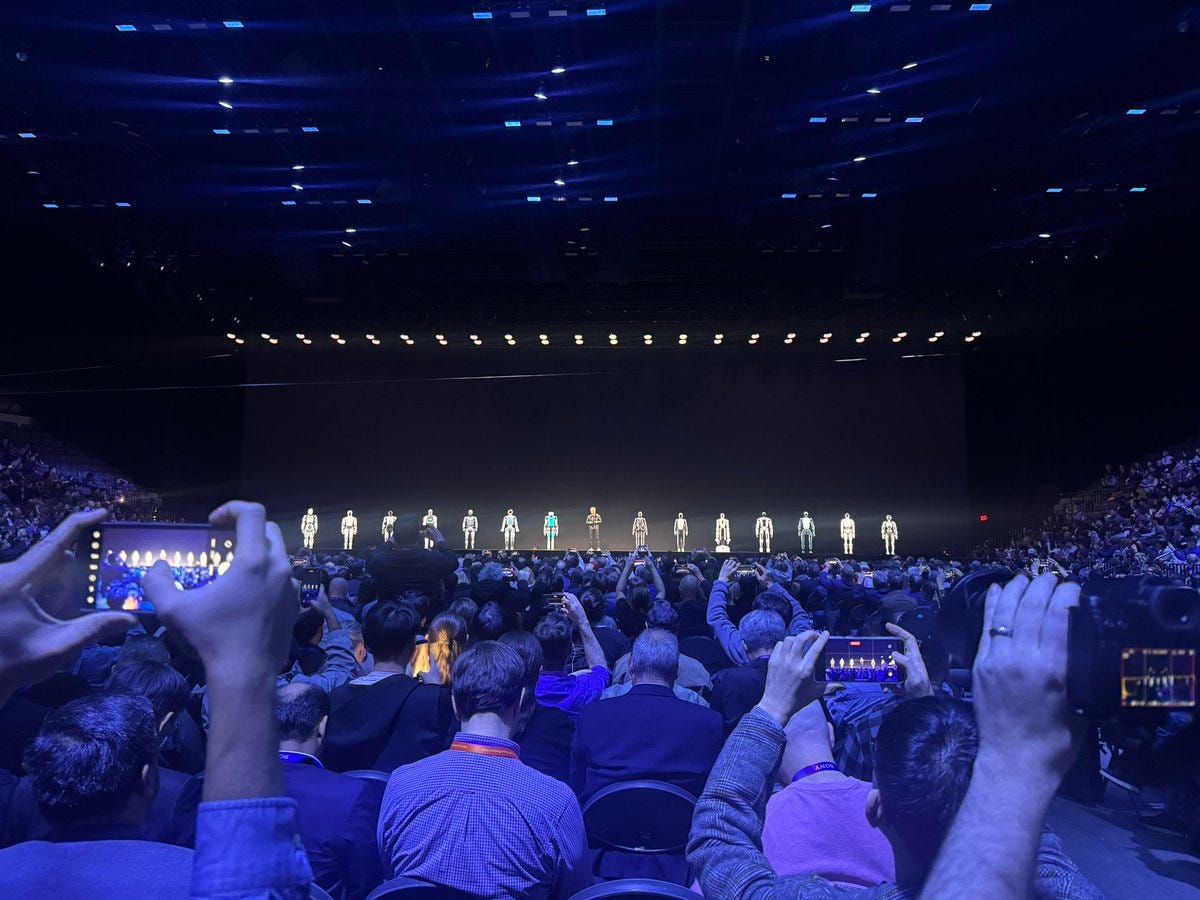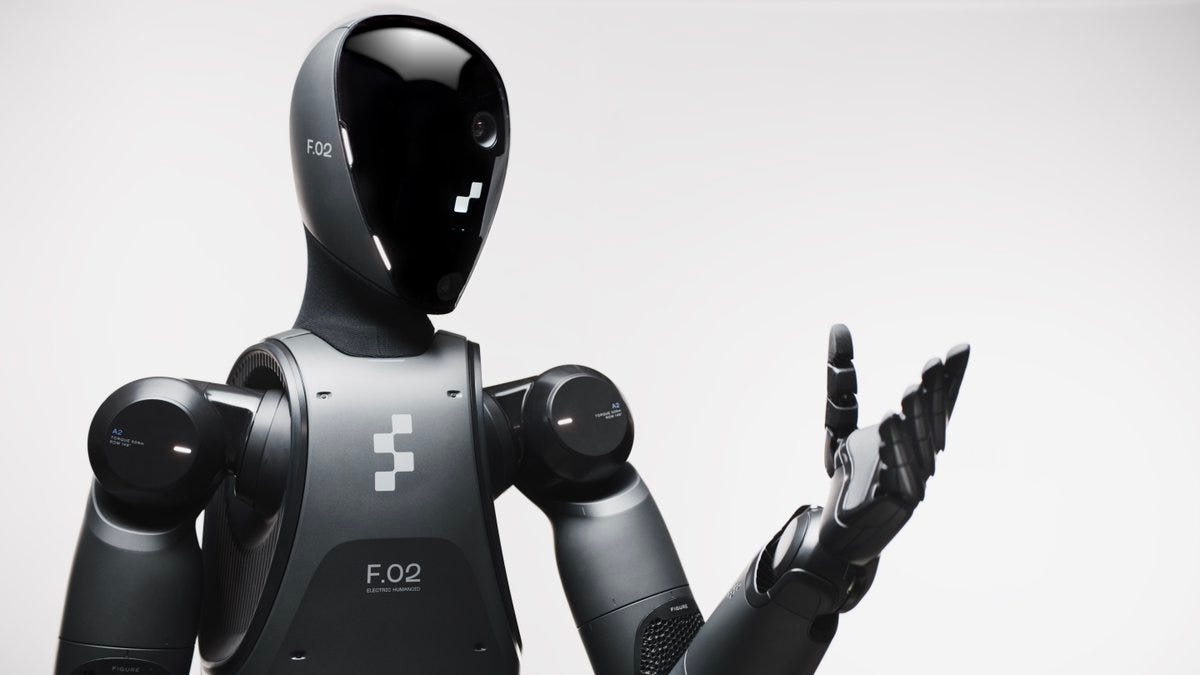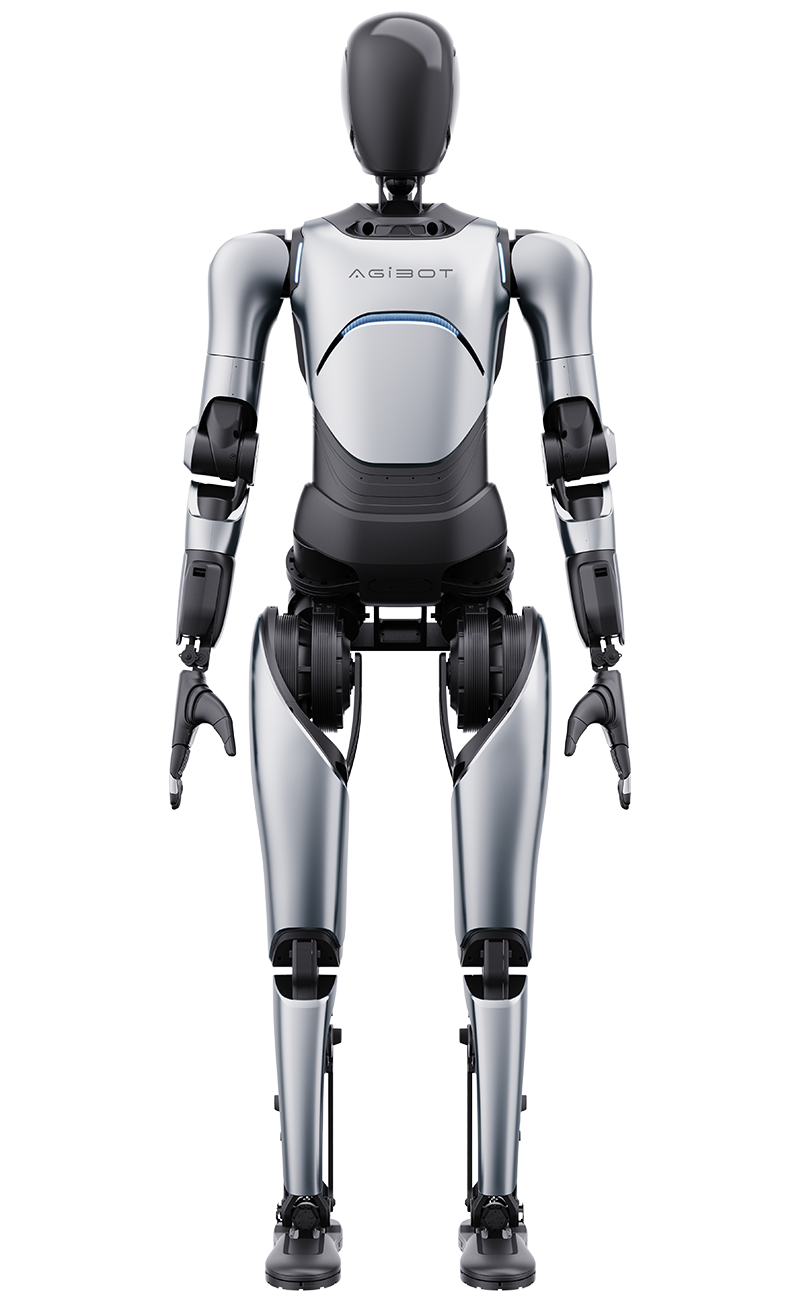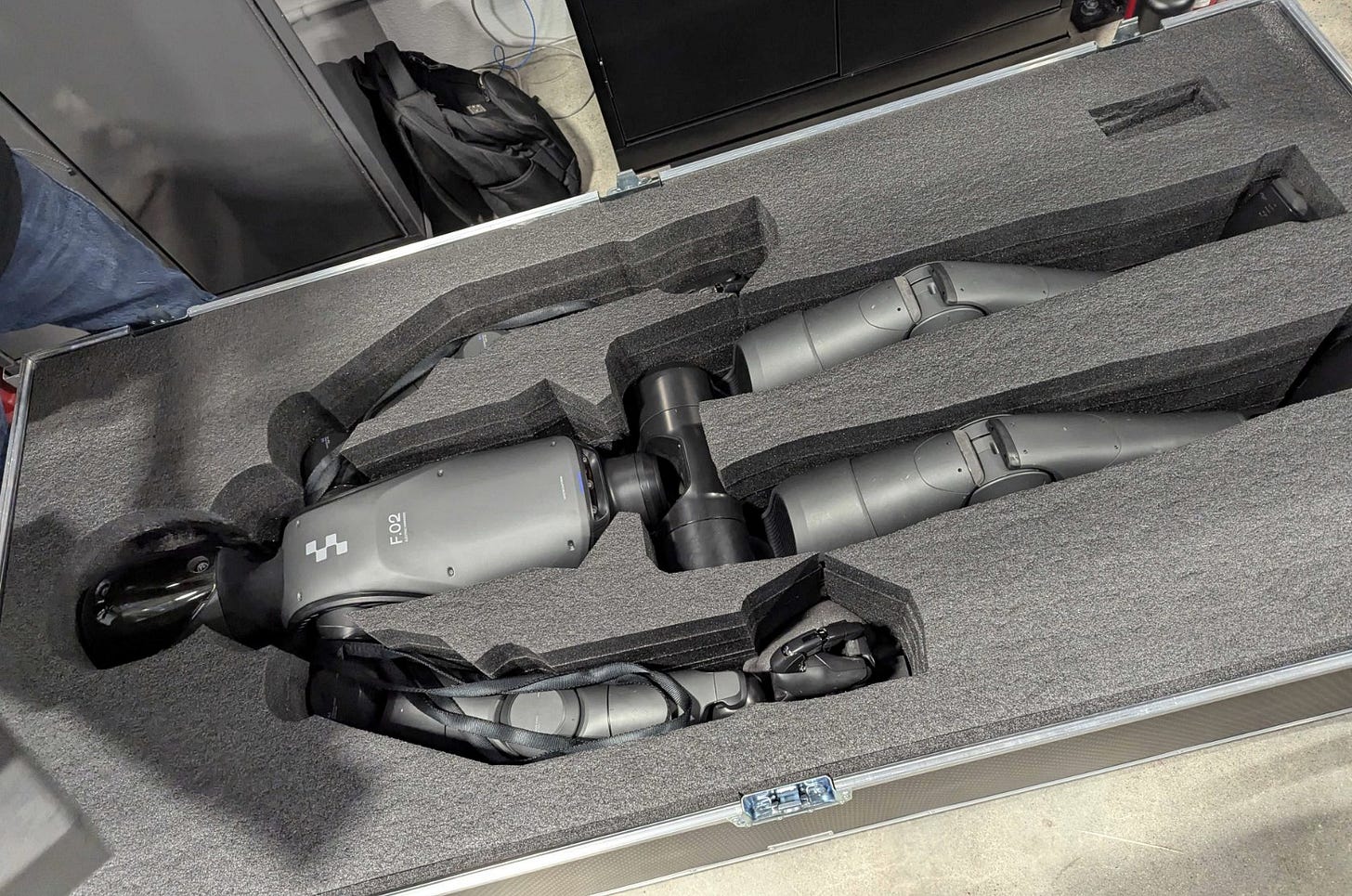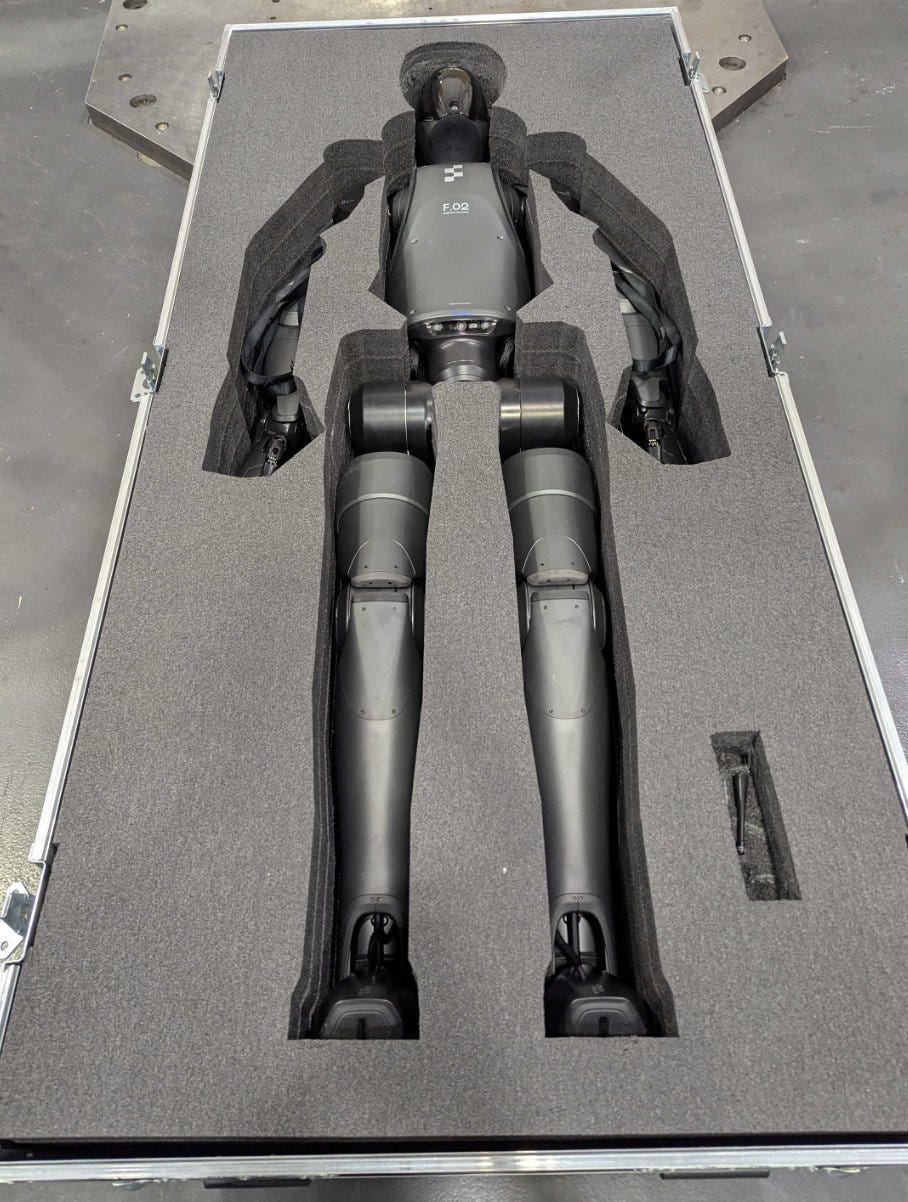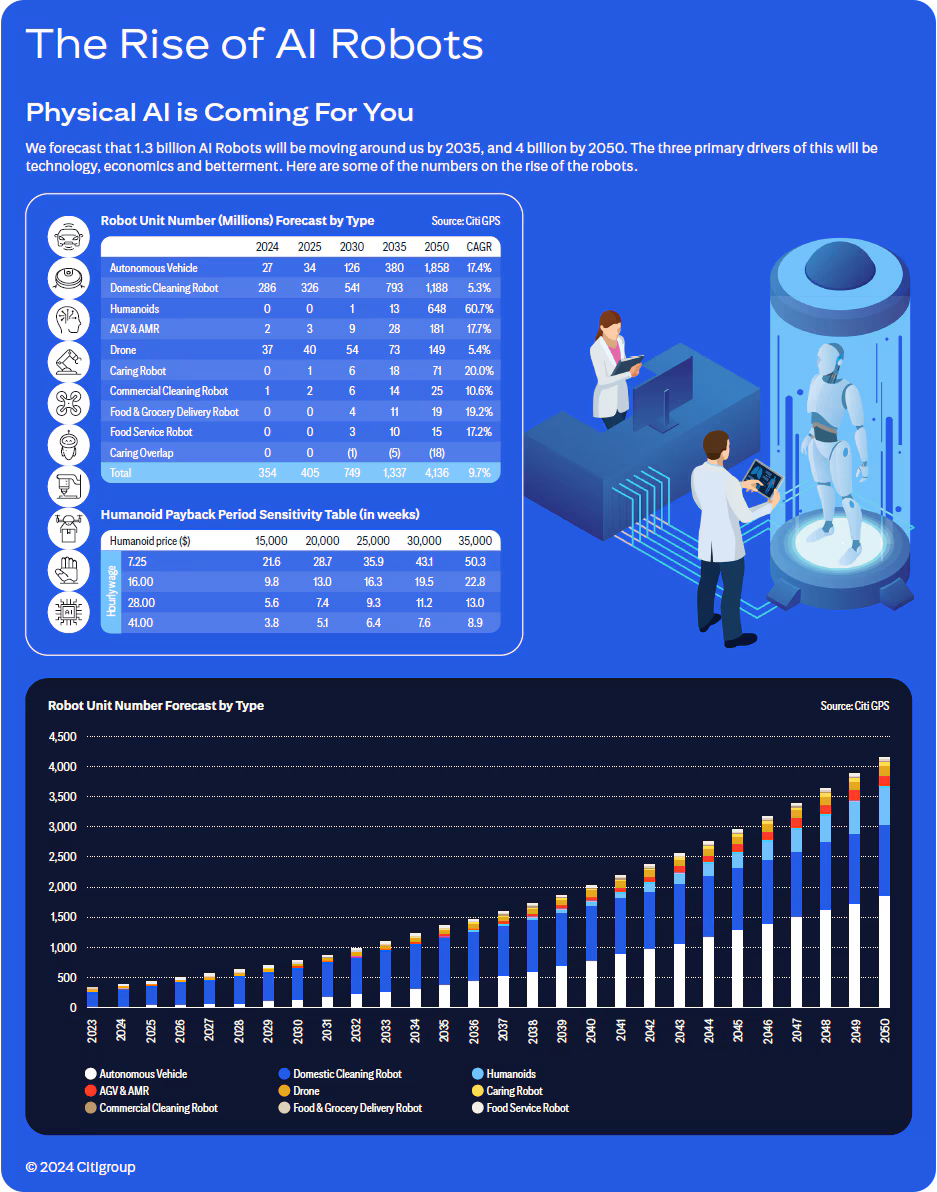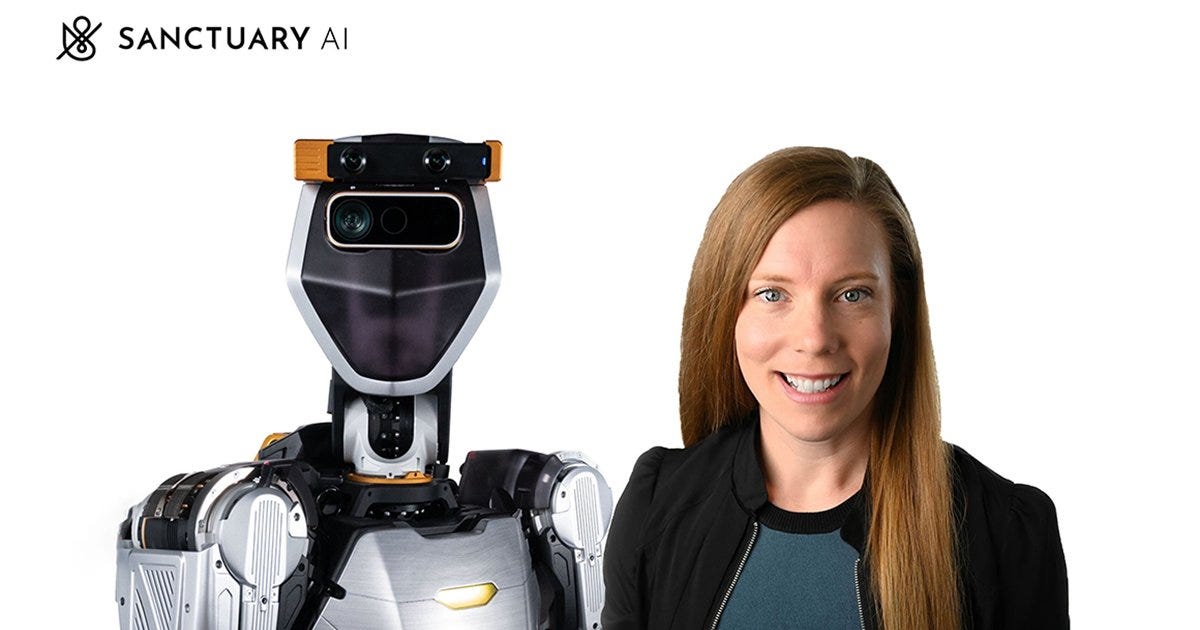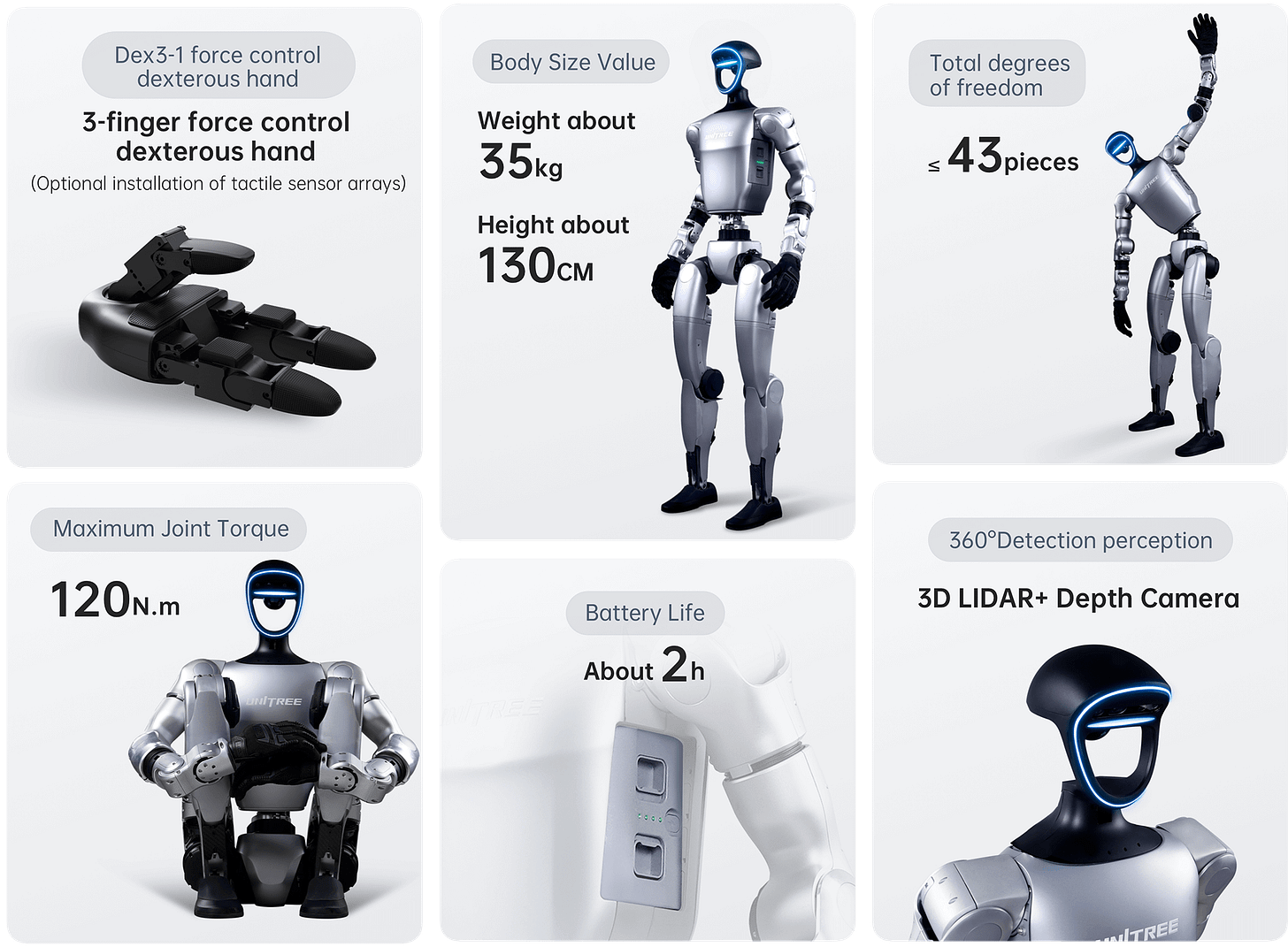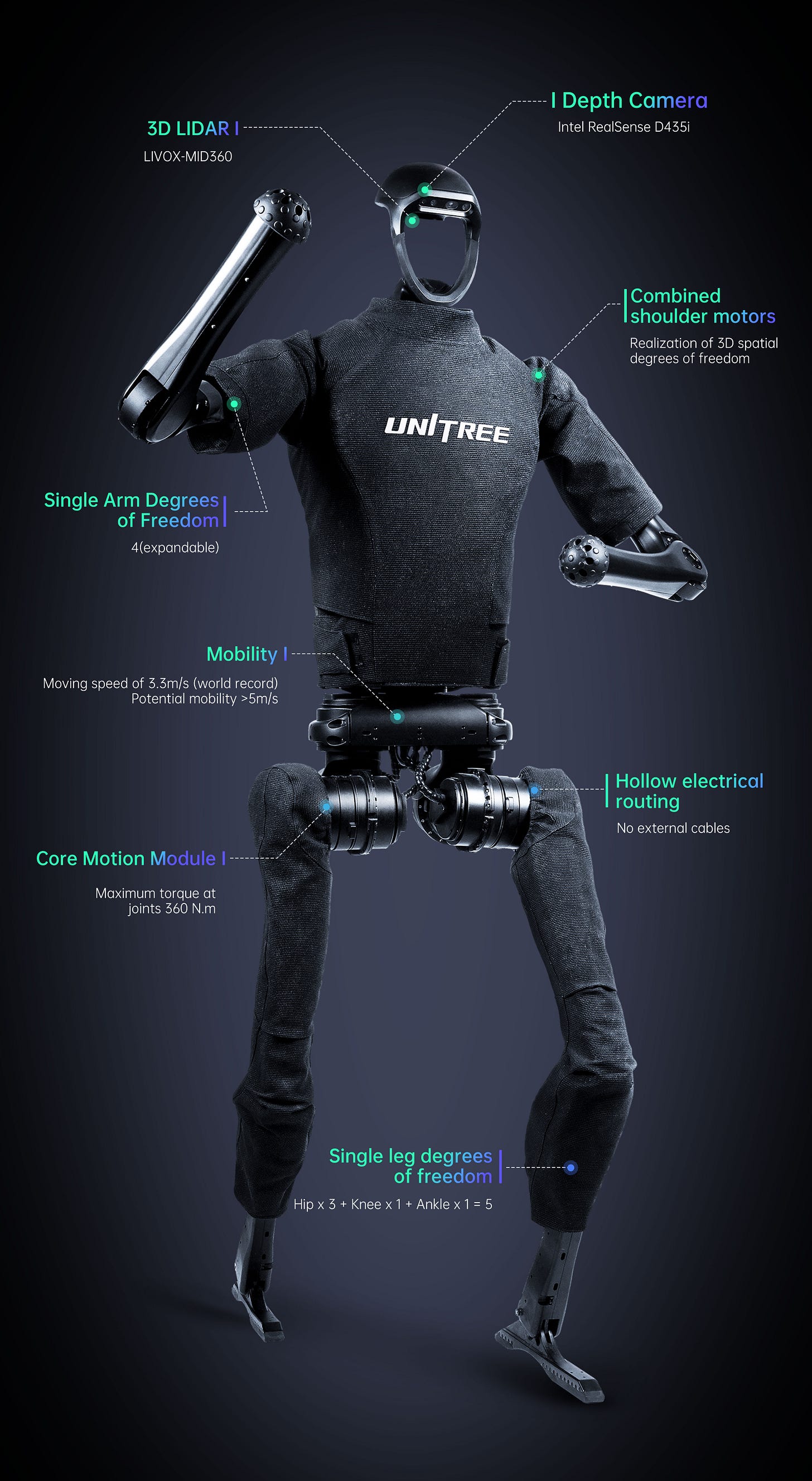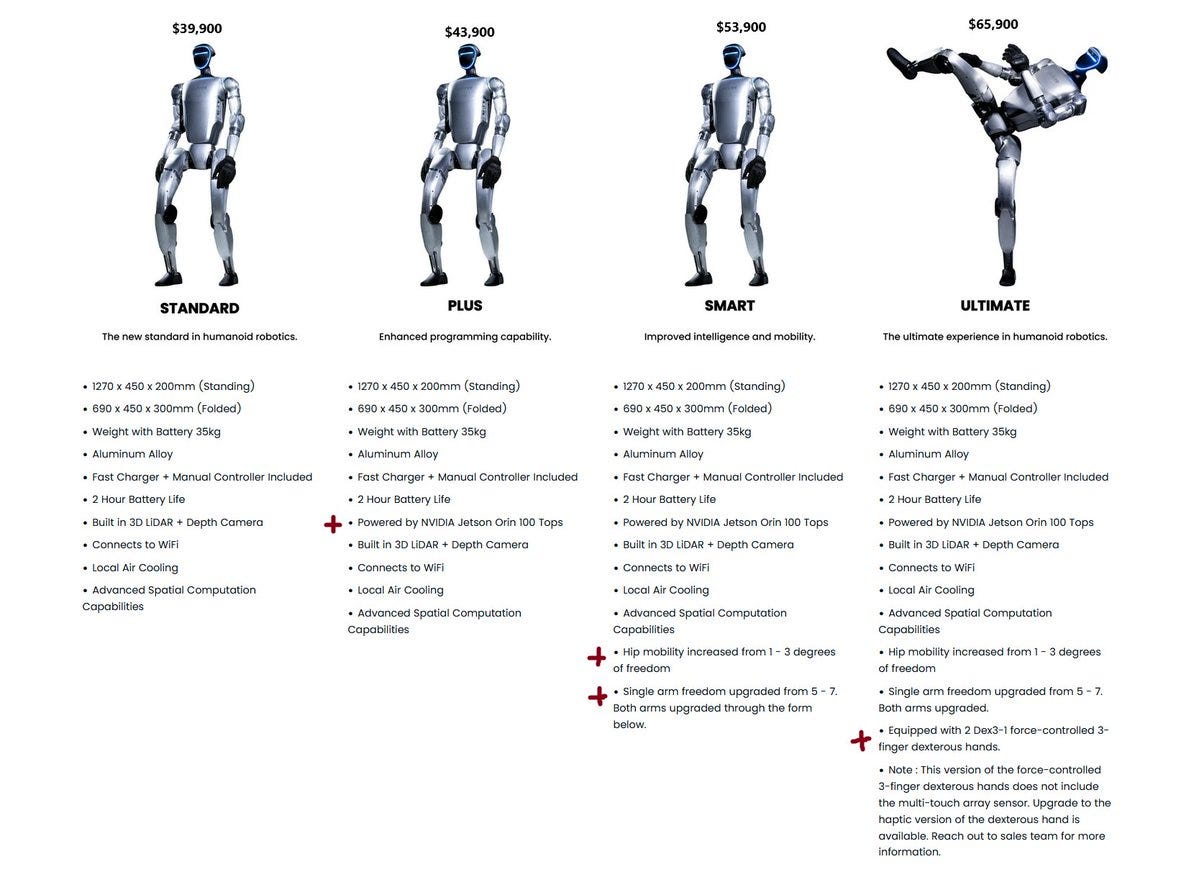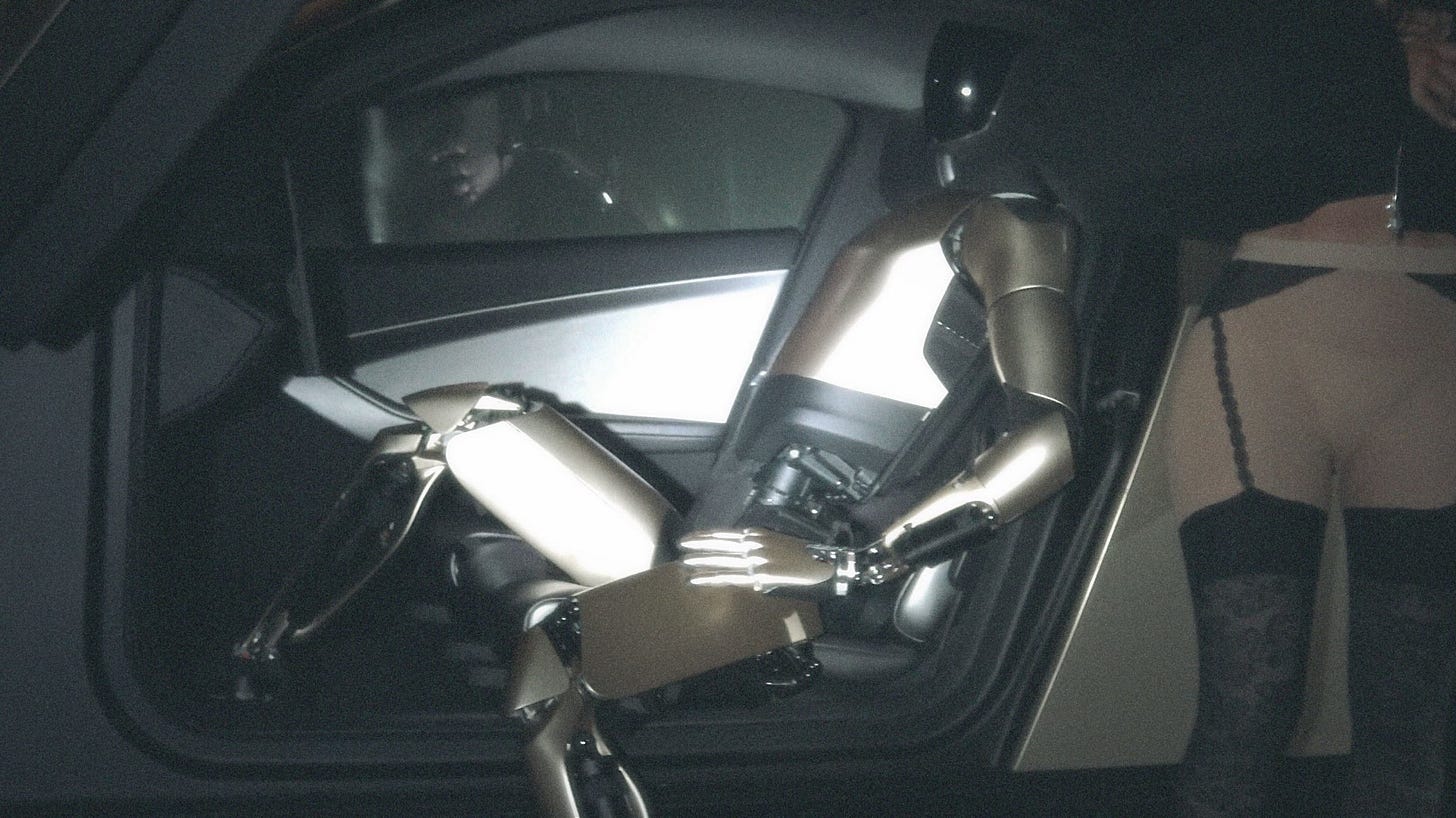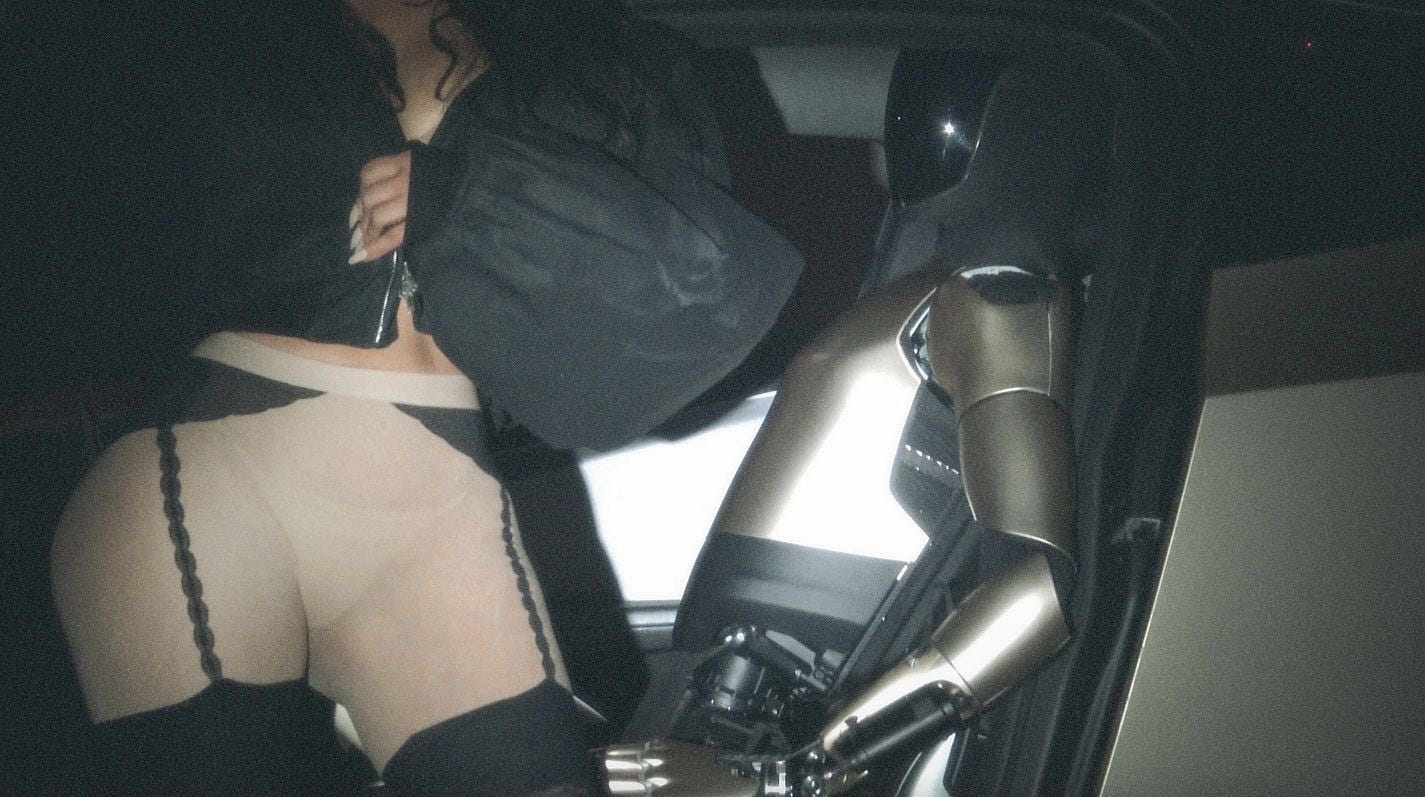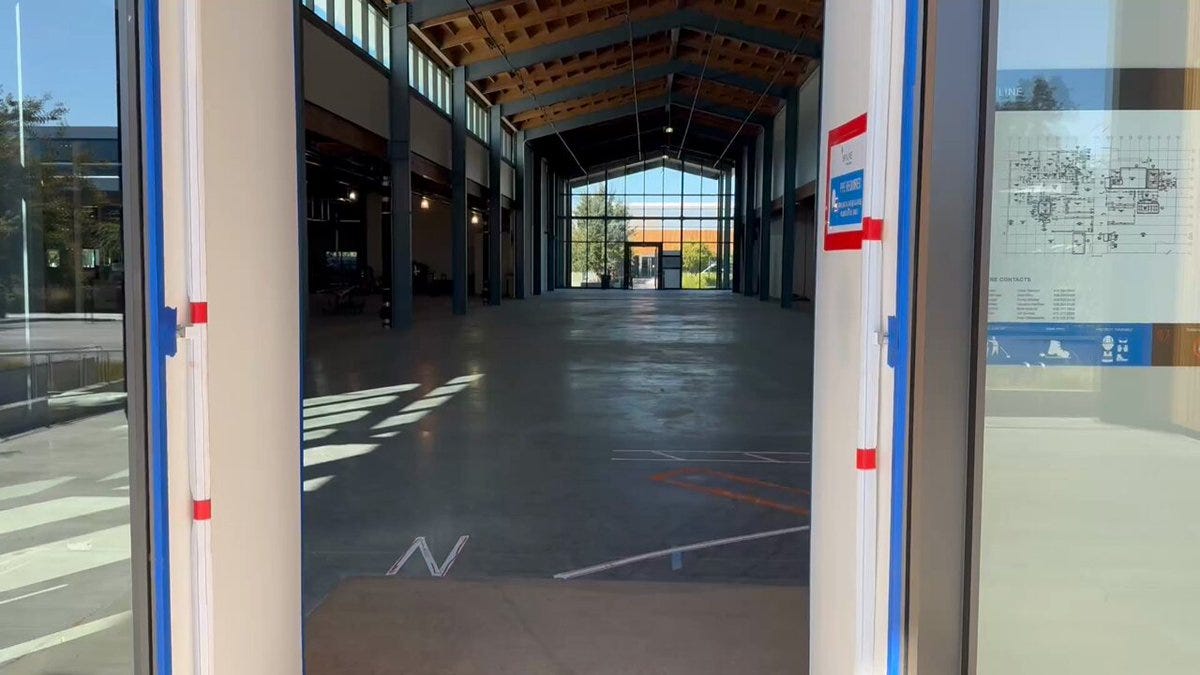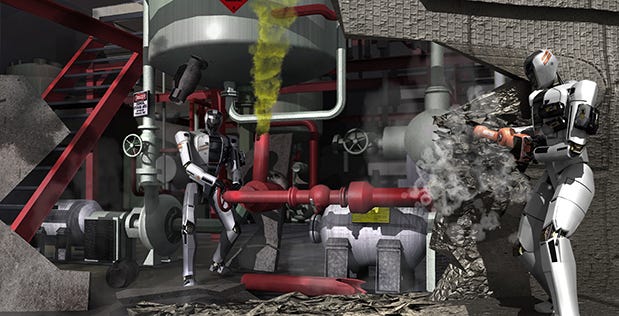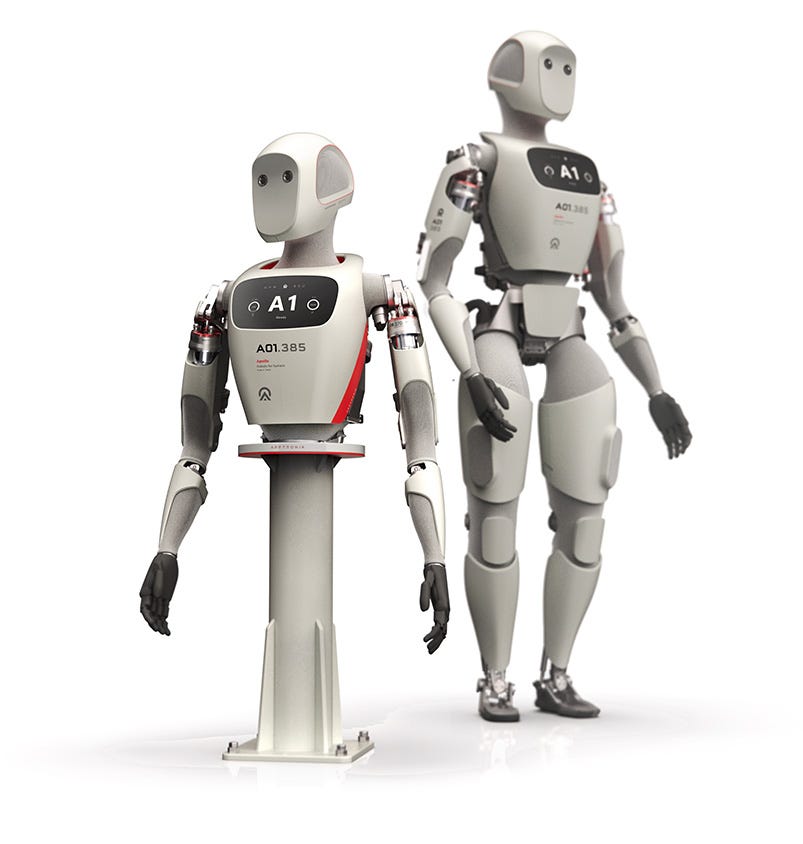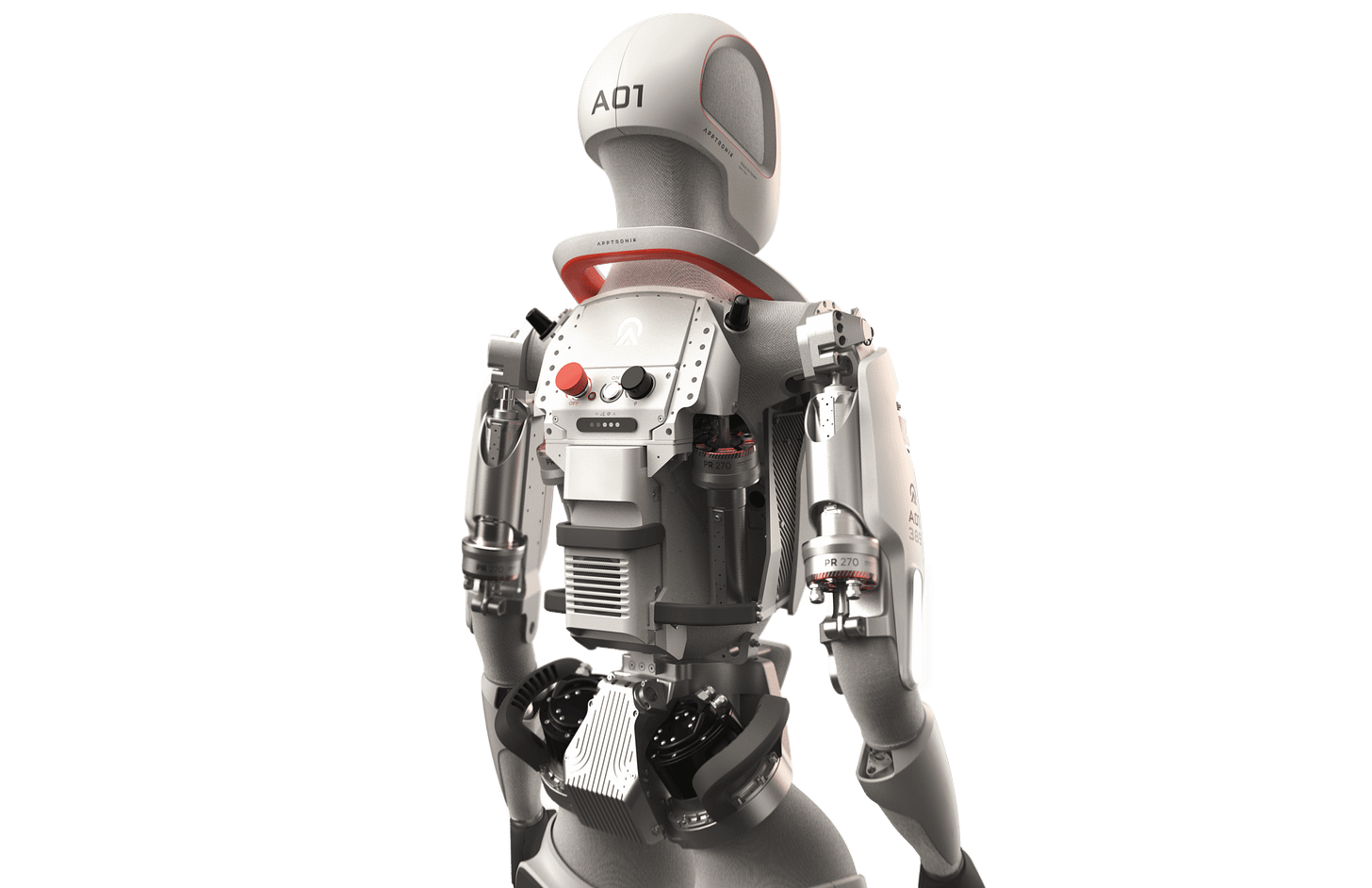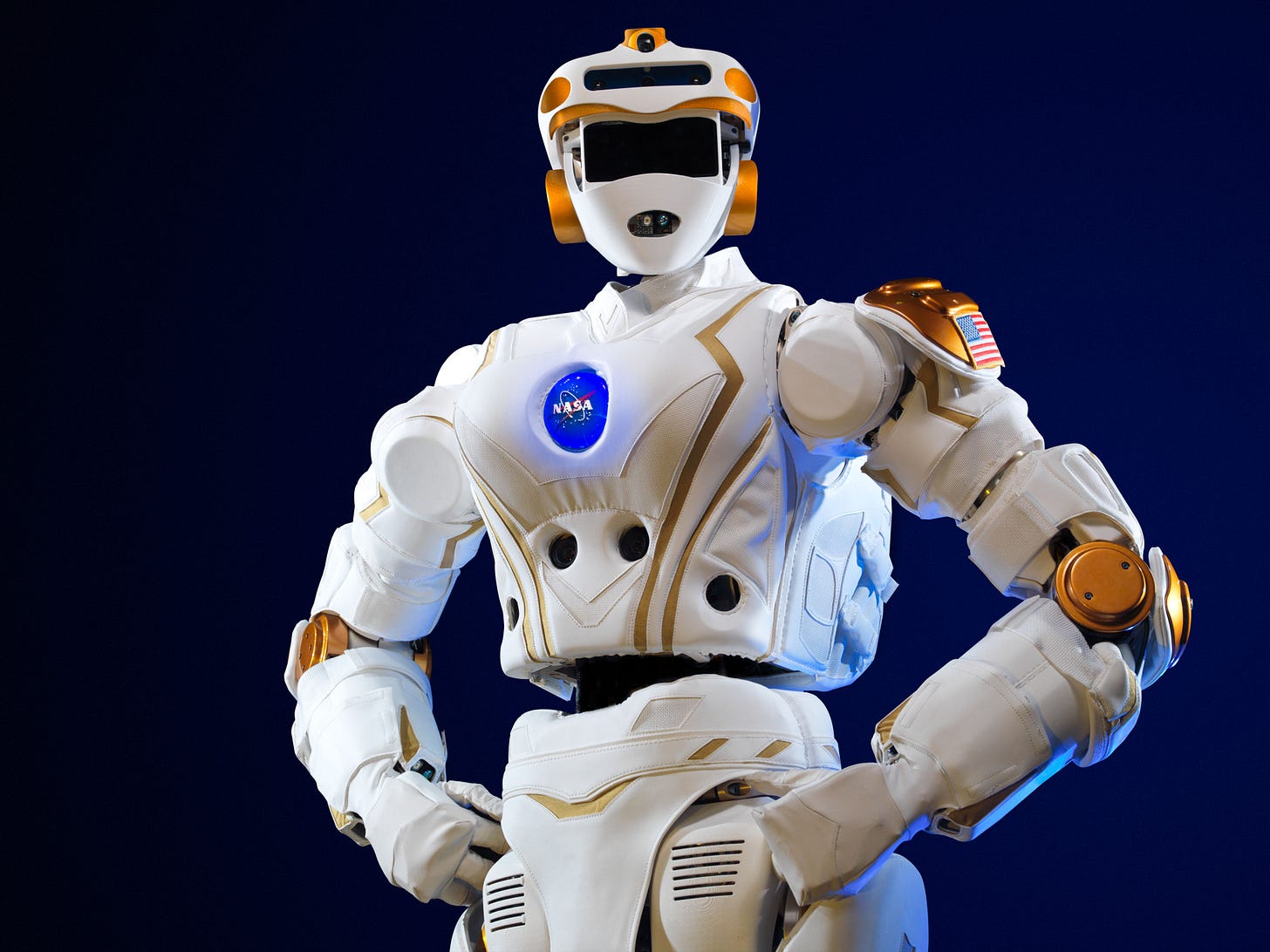Generalist robotics for AI and general-purpose humanoids to collaborate with humans with productivity, logistics, and creativity software, in multitasking for homes, businesses, or high risk.
DISCONTINUED
This content has been discontinued. Sorry for the inconveniences.
☑️ #24 Apr 30, 2025
🟥 0-shot prompting
[Topic] TOPIC: Population of humanoid robots TIMELINE: Set to reach 1 billion units QUERY: when? INCLUDE: globalxetfs.co.jp, globalxetfs.com, goldman sachs, morgan stanley
Humanoid Robots: The AI accelerant
phind.com (Phind-70B): [Sources not verified. Do your own research] According to recent projections, the humanoid robot population is expected to reach 1 billion units by the 2040s globalxetfs.com.
This prediction comes from industry stakeholders, including Tesla CEO Elon Musk, and is supported by multiple financial institutions' analyses.
Mermaid diagram > Humanoid Robot Market Growth Timeline
The diagram is quite clear and self-explanatory, showing the progression from current status through future projections. The timeline format makes it easy to understand the progression, and the section divisions clearly separate different periods. Let me continue with the detailed breakdown of the projections and supporting factors to complete the comprehensive answer.
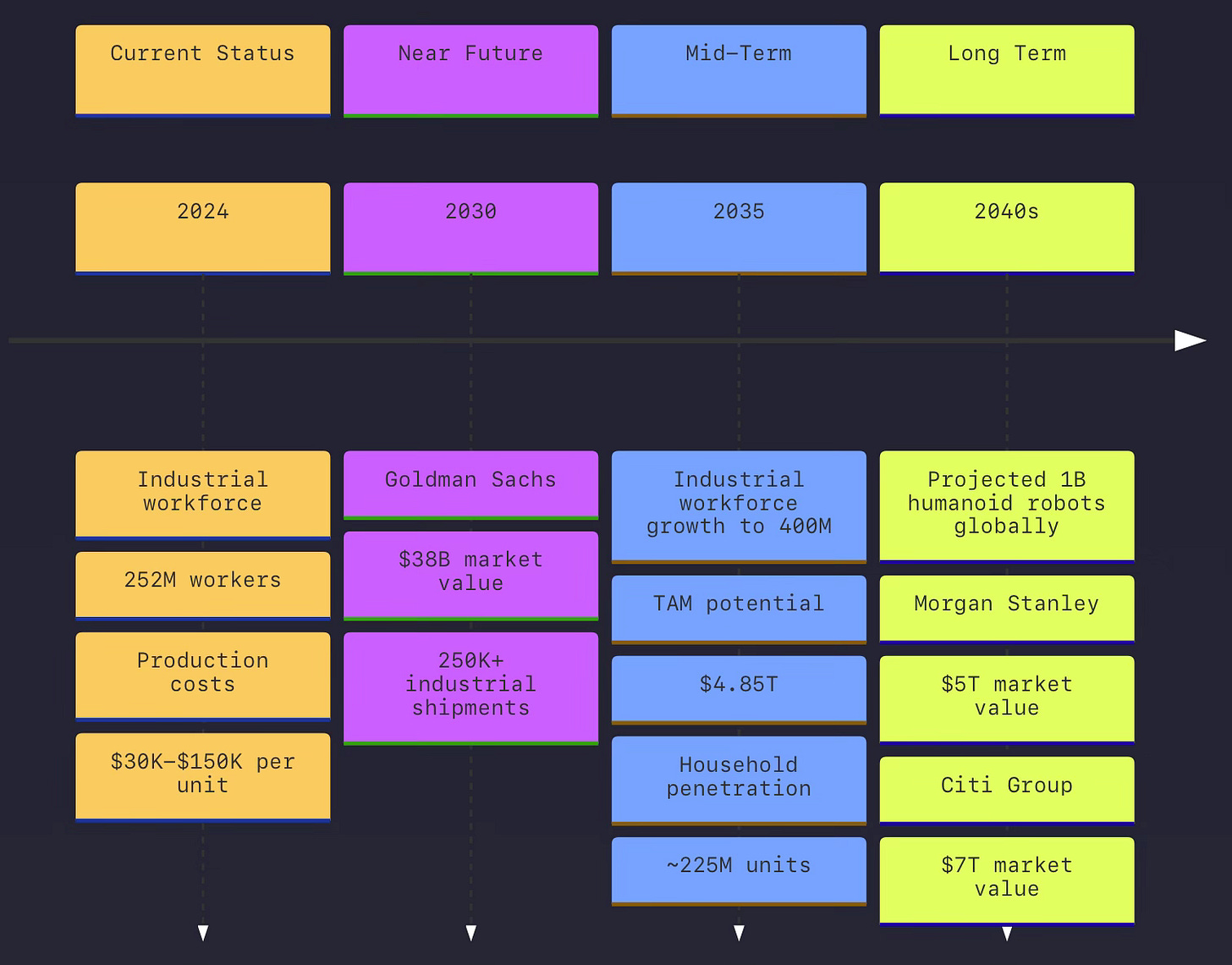
Let me continue with the detailed breakdown of the projections and supporting factors to complete the comprehensive answer.
Here's a detailed breakdown of the projections from various financial institutions:
Morgan Stanley | By 2050 | $5 trillion market value, 1 billion units
Citi Group | By 2050 | $7 trillion market with 1.19 billion humanoids
Goldman Sachs | By 2035 | $38 billion market, 1.4 million units annually
ARK Invest | By 2030 | Potential $1 trillion market
Several factors support this aggressive growth trajectory:
Rapid Technological Advancement
Accelerating AI progress, particularly in end-to-end AI systems
Improved robotic large language models (LLMs)
Enhanced self-training capabilities
Cost Reduction
Manufacturing costs decreased significantly from $50,000-$250,000 to $30,000-$150,000
Expected continued cost reduction of 15-20% annually
More affordable components and improved manufacturing techniques
Market Drivers
Industrial workforce expansion from 252 million (2024) to 400 million (2035)
Projected penetration of 15% of 1.5 billion global households
Growing demand for automated solutions in manufacturing and service sectors
The timeline to reaching 1 billion units is supported by both historical precedent and current market momentum. Similar to how automobiles became ubiquitous after their invention, humanoid robots are following a similar adoption pattern, with early industrial applications leading to eventual widespread consumer adoption.
🟥 Curated content
Which countries are most advanced in humanoid robots?
goldmansachs.com (2/24/24): [Excerpt] The global market for humanoid robots could reach $38 billion by 2035.
Geographically, no one country or region appears to be completely dominant in this emerging sector. Some Western companies likely have the most sophisticated AI software models, while Asia will probably be the manufacturing hub for humanoid components, because of the wide supply chain base and lower manufacturing costs.
Another reason Goldman Sachs Research is more optimistic about the sector is that more players are pouring resources into humanoids, Li says. The Chinese government started a robot fund to support research and development, and publicly listed component makers are recruiting staff and devoting capital and human resources into related areas.
There are signs that most of the hardware for humanoid robots is already available, or at least close to maturity. Robot components like cameras, motors, force sensors, transmission gears for movement, and batteries are mostly ready for commercial purposes, according to Goldman Sachs Research.
Obstacles remain
goldmansachs.com (11/15/22): [Excerpt] Humanoid Robots: Sooner Than You Might Think.
Obstacles remain: Today’s humanoid robots can work in only short one- or two-hour bursts before they need recharging. Some humanoid robots have mastered mobility and agility movements, while others can handle cognitive and intellectual challenges – but none can do both, the research says. One of the most advanced robot-like technologies on the commercial market is a self-driving vehicle, but a humanoid robot would have to have greater intelligence and processing abilities than that – by a significant order. “In the history of humanoid robot development,” the report says, “no robots have been successfully commercialized yet.”
That said, there’s a pathway to humanoid robots becoming smarter and less expensive than a new electric vehicle. Goldman Sachs suggests humanoid robots could be economically viable in factory settings between 2025 to 2028, and in consumer applications between 2030 and 2035. Several assumptions support that outlook, and the Goldman Sachs Research report details the multiple breakthroughs that have to happen in order for it to come to fruition. The battery life of humanoid robots would have to improve to the point where one could work for up to 20 hours before requiring recharging (or need fast charging for one hour and work for four to five hours, then repeat).
Mobility and agility would have to incrementally increase, and the processing abilities of such robots would also have to make steady gains. In addition, depth cameras, force feedback, visual and voice sensors, and other aspects of sensing—the robot’s nerves and sensory organs—will all need to get incrementally better.
There will also need to be gains in computation, so that robots can avoid obstacles, screen the shortest route to completion of a task, and react to questions.
Still more challenging will be the process of training and refining the abilities of humanoid robots once they begin working. This process can take upwards of a year.
And finally, robot makers will need to bring down production costs by roughly 15-20% a year in order for the humanoid robot to be able to pay for itself in two years.
+ Related content:
“Humanoid Robot” ETFs:
eng.riseetf.co.kr: [Excerpt] RISE American Humanoid Robot ETF by KB Asset Management. Key points:
Unlike traditional robots, humanoid robots that integrate AI(Software) and Robotics (Hardware) have entered the commercialization phase, with big tech companies like Tesla and NVIDIA joining the field. The U.S. humanoid robot industry is gaining attention as the next key growth theme, poised to drive fundamental changes in industrial paradigms across manufacturing, logistics, and services.
The brain, powered by AI, along with sensors, actuators, and other components, is the core element of the humanoid robot industry. We invest across the value chain (hardware, software, and applications) to capture the cyclical growth effects throughout the entire industry.
plusetf.co.kr: [Excerpt] [Translated] PLUS Global Humanoid Robot Active ETF by Hanwha Asset Management
The final destination of AI development, a new industrial revolution 'Humanoid Robot Industrial Industry' We will inform you of the value chain investment solution! Theme and content The core of a new industrial revolution in the AI era, the humanoid robot industry! Core small manager + invest in leading companies in the industry! PLUS Global Humanoid Robot Active ETF.
m.samsungfund.com: [Excerpt] KODEX American Humanoid Robot ETF by Samsung Asset Management.
KODEX US Humanoid Robot ETF seeks to track the daily performance of the iSelect U.S. Humanoid Robot index (Price Return) by investing in mainly US stocks.
🙂
☑️ #23 Apr 19, 2025
☑️ #21 Mar 7, 2025 [1] (4/19/25) World's First Humanoid Robot Half Marathon to Be Held in Beijing E-Town! Registration Opens
[2] World's First Humanoid Robot Half Marathon: Tiangong Robot won with a time of 2 hours 40 minutes
@TheHumanoidHub: Tiangong robot won the Beijing half marathon with a time of 2 hours 40 minutes - more than twice the time of the men's race winner. The robot is built by the Beijing Humanoid Robot Innovation Center.
<>
@TheHumanoidHub: It felt like the whole thing was set up to let the local government-backed Innovation Center take the spotlight - Unitree didn’t bring its latest control system, and EngineAI didn’t participate.
+ Related content:
@DailyBeijing: Tiangong robot is the champion! The world's first humanoid robot half-marathon crowns its robot winner!
@SixthTone: Of the 22 robots that took part in the marathon, Tiangong was the first to cross the finish line, completing the course in 2:40:42. Few of these bots were built to run but that’s the point. The marathon is designed to push limits: gait, endurance, and real-world autonomy. Top prizes include:
Best Endurance
Best Gait
Most Creative Form
Fan Favorite
Completion Awards
🙂
☑️ #22 Mar 16, 2025
AXE Dance! That's professionalism!
@Engineairobot: When Robots Dance Like "Axe Gang": EngineAI Redefined Robot "Soul" 🕺
Remember last month the world's first viral "robot front-flip" that blew up the industry? 🔥 Now, We’re back with new actions—this time merging hardcore robotics with Hong Kong cinema nostalgia in a way that’s making engineers and movie fans scream "encore!"
Meet PM01, our "Axe Gang Trainee" 🎬
After hours of dance battles with professional choreographers (yes, real human dancers!), PM01 now nails every iconic move from Kung Fu Hustle:
0.01s precision joints for "Gang’s body flip" sass
Force-control algorithms turning metal arms into "Lion’s Roar" silk
Up to 24-DOF full-body sync—down to the terrifying walking gait
🙂
☑️ #21 Mar 7, 2025
[1] (4/19/25) World's First Humanoid Robot Half Marathon to Be Held in Beijing E-Town! Registration Opens
english.beijing.gov.cn: [Excerpt] Participating robots are required to have a humanoid appearance and be capable of bipedal walking or running, while robots with wheeled designs are not eligible to participate. In terms of control methods, both manual remote control (including semi-autonomous) and fully autonomous control are acceptable. Teams must ensure that their robots pose no risk to the track, other participating robots, or surrounding individuals. Compliance with all event regulations, including race routes, competition rules, and any specific technical requirements, is mandatory.

🙂
☑️ #20 Jan 7, 2025
General robotics
@EdLudlow: “The ChatGPT moment for general robotics is just around the corner,” says Huang.
+ Related content:
@NVIDIA (1/6/25): NVIDIA CEO Jensen Huang Keynote at CES 2025
🙂
☑️ #19 Dec 19, 2024
It marks 31 months from filing our C-Corp to getting to humanoid robot revenue
@adcock_brett: Exciting news - today, Figure officially became a revenue-generating company!
This week, we delivered F.02 humanoid robots to our commercial client, & they're currently hard at work.
It marks 31 months from filing our C-Corp to getting to humanoid robot revenue.
🙂
☑️ #18 Dec 16, 2024
Industrial Design Series: Introducing Expedition A2 by Zhiyuan (AGIROS)
zhiyuan-robot.com: [Excerpts] Zhiyuan Expedition A2 Interactive service robot.
Expedition A2 adopts the principle of human engineering to make every detail closer to the experience of human natural interaction, more natural and comfortable, and suitable for marketing customer service, exhibition hall explanation, supermarket tour, front desk reception, business consultation and other work.
Autonomous movement and reliable walking
Based on HIMUS (High-performance Multimodal Mapping System)
3D-SLAM algorithm, VectorFlux regulation algorithm, low latency and low drift performance, support in complex and variable dynamic environments Now L4 level is self-moved.High-reliability, lightweight, ultra-high groove full-rate winding process mass-produced self-developed integrated joint, the highest peak torque is 430NOm, the motor torque density is 50Nm/kg, the dynamic performance is good, and the joint is reliable and supports long-term stable walking.
With RTMOF (Real-Time Robust Motion Framework) nonlinear model prediction control and reinforcement learning algorithm, as well as an efficient dynamic planning engine, it can quickly generate the global optimal trajectory and continuously optimize the movement strategy, with strong anti-interference ability., realize agile, reliable and flexible walking in an uncertain environment.
+ Related content:
zhiyuan-robot.com (12/16/24): Zhiyuan starts the commercial mass production of general robots.
Other “Agibots”:
Zhiyuan Expedition A2-Max (Heavy-duty special robot)
Zhiyuan Expedition A2-W (Flexible intelligent robot)
Zhiyuan Expedition A1 (General humanoid robot)
🙂
☑️ #17 Dec 14, 2024
With synthetic organs & artificial muscles
@BrianRoemmele: Clone Robotics of Poland just unveiled Clone Alpha, a 100 PSI water-powered humanoid robot with synthetic organs & artificial muscles. Featuring Myofiber technology it mimics skeletal, muscular, vascular & nervous systems by attaching artificial muscles to precise 206 bone points, similar to real animals.
+ Related content:
clonerobotics.com (): Welcome to the Clone World. Musculoskeletal, intelligent androids to solve all the common problems of daily life.
clonerobotics.com/android > Clone Alpha
Recent videos:
🙂
☑️ #16 Dec 13, 2024
A fleet of F.02 humanoid robots was shipped today
@adcock_brett: A fleet of F.02 humanoid robots was shipped today from Figure They are being delivered to our commercial customer and will never return Excited to be shipping humanoid robots into the real world, LFG!!
+ Related content:
@adcock_brett (update; 12/16/24) It’s official: F.02 humanoid robots have arrived at our commercial customer.
The robots are connecting to the network and performing pre-checks this morning.
Our time from filing the C-Corp to shipping commercially was 31 months.
🙂
☑️ #15 Dec 5, 2024
The Rise of AI Robots
citigroup.com: [Excerpt] Physical AI is Coming for You.
Billions of AI-robots and humanoids will soon be among us.
In this new Citi GPS report, our analysis suggests there will be 1.3bn AI-robots by 2035 and 4bn by 2050. There are three primary drivers of this new market.
Technology
Economy
Betterment
+ Continue reading (pdf)
🙂
☑️ #14 Dec 3, 2024
The NeurIPS 2024 Creative AI Track
@xorbis: SketcherX paper arxiv : https://arxiv.org/abs/2409.15292 This paper has been accepted in "The NeurIPS 2024 Creative AI Track".
+ Related content:
neurips.cc: NeurIPS 2024. The Thirty-Eighth Annual Conference on Neural Information Processing Systems.
xorbis.com: [Excerpt] WHO WE ARE. In the field of digital exhibition and media, we are leading the future of turning imagination into reality by using domestic state-of-the-art realistic media and XR technology to produce content and implement an optimized space for this.
@xorbis: 서울로봇인공지능과학관, The Seoul Robot & AI Museum.
🙂
☑️ #13 Dec 3, 2024
Toyota's Basketball Robot Makes Longest Ever Shot - Guinness World Records
@guinnessworldrecords: A team at Toyota in Japan have upgraded CUE to be able to shoot basketballs from the other side of the court, after originally setting a free throw record in 2019.
At Guinness World Records we want to show that everyone in the world is the best at something, and we’re here to measure it! Whether you’ve got the stretchiest skin, know the world’s smallest dog or want to create the largest human dominoes chain we want to hear about it. Here on the Guinness World Records YouTube channel we want to showcase incredible talent. If you're looking for videos featuring the world's tallest, shortest, fastest, longest, oldest and most incredible things on the planet, you're in the right place.
🙂
☑️ #12 Dec 2, 2024 🔴 rumor
NVDA’s Robots
@dnystedt: Nvidia has approached a number of Taiwan machine tool and key component makers to join its humanoid robot supply chain, including Hota Industrial, Chieftek, Hiwin, media report, citing unnamed industry sources, . Nvidia will also reportedly set up a robot assembly base in Taiwan. $NVDA #semiconductors #semiconductor money.udn.com
🙂
☑️ #11 Nov 27, 2024
Industrial Design Series: Introducing Phoenix and Sanctuary AI
sanctuary.ai: [Excerpts] Machines that Work and Think Like People. Sanctuary AI is on a mission to create and deploy millions of industrial-grade humanoid robots to help address growing labor challenges.
Our World Needs More Workers
The world is facing an ongoing, and rapidly worsening labor crisis. An increasingly aging and shrinking population means that there aren’t enough people for our current way of life to continue flourishing. This will only get worse over time. The world needs more workers, especially in the kinds of jobs that are too dull, dirty, or dangerous for people to want to do them.
This challenge can’t be solved with special purpose technologies alone. We believe that general purpose, AI humanoid robots are an inevitable part of the future. This is not just because we want it to happen, but because it has to.
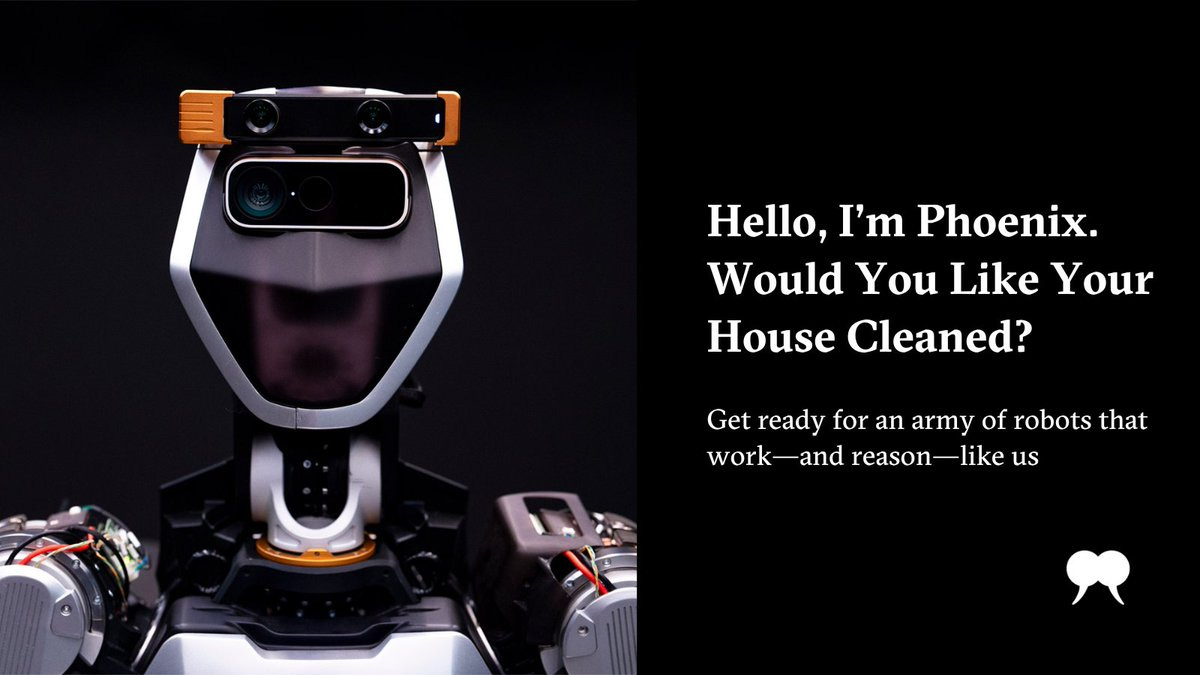
+ Related content:
techip.cc & owninnovation.ca (10/15/24): [Excerpt] While China does appear to lead in the deployment of robotic technology in industry, the data tells a different story in terms of patent assets outside of China. Ubtech Robotics from Shenzhen, China is the 10th-ranked company in GPR patents, yet no other Chinese companies make the top 15 in GPRs. The next highest-ranked Chinese companies is Midea Group Co, ranked 54th in GPR and 24th in dexterous manipulation technologies. Of the top 100 companies, only three are of Chinese origin while others are spread across geographies, led by North America.
As far as recognised startup and emerging growth companies focused on humanoid robotics are concerned, only Canadian company Sanctuary AI and Brain Corp, headquartered in San Diego, make the list. Companies such as Agility Robotics, Figure, Apptronik and 1X (and others) are recognised in industry trade press as highly innovative; however, these firms do not yet appear to have patent portfolios that match their reputation for innovation. Note that that due to Hyundai’s 80% ownership and SoftBank’s 20% stake, we did not calculate Boston Dynamics on a stand-alone basis.
🙂
☑️ #10 Nov 22, 2024
Industrial Design Series: Unitree G1 and Unitree H1 by Unitree Robotics
unitree.com: [Excerpt] Unitree Robotics is a world-renowned civilian robotics company, which is focusing on the R&D, production, and sales of consumer and industry-class high-performance general-purpose legged and humanoid robots, six-axis manipulators, and so on.Unitree Robotics has been invited to attend the 2021 CCTV Spring Festival Gala, the opening ceremony of Winter Games 2022, the 2023 Super Bowl, The 19th Asian Games and The 4th Asian Para Games, and has been interviewed and reported by CCTV, BBC and other well-known media for many times.Unitree Robotics is the world‘s first company to start public retail of high-performance quadruped robots, and the first to achieve industry landing, with global sales leading over the years.
Unitree has excellent leadership in core robot parts, motion control, robot sensing and other comprehensive fields.
Unitree attaches great importance to independent research and development and technological innovation, fully self-researching key core robot components such as motors, reducers, controllers, LIDAR and high-performance perception and motion control algorithms, integrating the entire robotics industry chain, and reaching global technological leadership in the field of quadruped robots. At present, we have applied for more than 180 domestic patents and granted more than 150 patents all over the world.
Línea de tiempo de Unitree
Unitree G1 (2024)
> On May 13, Unitree Robotics introduces its latest masterpiece——Unitree G1 Humanoid agent, AI avatar! It immediately caused a sensation in the global AI and robotics fields. The robot is about 127 centimeters tall and weighs about 35 kilograms. It has flexibility beyond ordinary people and unlocks unlimited movement potential.
Unitree H1 (2023)
> On August 15, 2023, Unitree officially released the first universal humanoid robot H1, which is known as the first full-size general-purpose humanoid robot that can run in China, with the highest power performance of the global approximate specifications.
+ Related content:
@TheHumanoidHub: The Unitree G1 was initially announced with a promise of a $16k price tag. The actual starting price is now $40k and goes up to $66k for a fully loaded version. That's not exactly cheap for a 4′ 2″ tall hardware platform with a basic SDK.
🙂
☑️ #9 Nov 20, 2024
“Industrial robotics investments are surging with breakthroughs in physical AI”
investor.nvidia.com: [Excerpt] NVIDIA Announces Financial Results for Third Quarter Fiscal 2025.
“The age of AI is in full steam, propelling a global shift to NVIDIA computing,”
“Demand for Hopper and anticipation for Blackwell — in full production — are incredible as foundation model makers scale pretraining, post-training and inference.
“AI is transforming every industry, company and country. Enterprises are adopting agentic AI to revolutionize workflows. Industrial robotics investments are surging with breakthroughs in physical AI. And countries have awakened to the importance of developing their national AI and infrastructure,”
Jensen Huang, Founder and CEO of Nvidia Corporation
🙂
☑️ #8 Nov 20, 2024
The Sun in 2015: "We are going to have sex with robots in the next 10 years." Kim Kardashian en 2024:
🙂
☑️ #7 Nov 18, 2024
Industrial Design Series: Figure 02 de Figure
Figure dates back to 2022 founded by a team experienced in the challenges of DARPA Robotics Challenge (DRC).figure.ai: [Excerpt] The world’s first commercially-viable autonomous humanoid robot.
WHY A HUMAN FORM FACTOR?
We’ve designed our world for the human form. Hands allow us to open doors and use tools; arms and legs allow us to move efficiently, climb stairs, lift boxes, and more. Figure 02 brings together the dexterity of the human form and cutting edge AI to go beyond single-function robots and lend support across manufacturing, logistics, warehousing, and retail.
+ Related content:
@BMWGroup (11/20/24): At BMW Group, we’re embracing innovation with @figureai 02 humanoid robots. After successful trials at Plant Spartanburg, they’ve achieved remarkable improvements back at the Figure Lab in Silicon Valley — ready for the next step in shaping tomorrow’s production processes. #BMWGroup #Innovation #BMWiFACTORY
@adcock_brett (11/15/24): Update on Figure's new campus, building 1 10x sqft for expanding engineering headcount, more robot labs, production manufacturing, data collection.
We’ll move into the first building in February, with new buildings launching every 90 days.
darpa.mil (archived): [Excerpt] DARPA Robotics Challenge (DRC). The Department of Defense's strategic plan calls for the Joint Force to conduct humanitarian, disaster relief and related operations. Some disasters, due to serious risks to the health and well-being of rescue and relief workers, prove to be too large in scale or scope for a timely and effective human response. The DARPA Robotics Challenge (DRC) seeks to address this problem by promoting innovation in human-supervised robotic technology for disaster response operations.
The main technical objective of the DRC is to develop human-supervised terrestrial robots capable of performing complex tasks in dangerous, degraded and human-designed environments. Competitors in the DRC are developing robots that can use standard tools and equipment commonly available in human environments, ranging from hand tools to vehicles.
🙂
WORK IN PROGRESS
We are moving feed content to publishing here. Pending english translation. Sorry for the inconvenience
☑️ #6 Nov 15, 2024
Serie “Di Industrial”: Presentando a Apollo de Apptronik
apptronik.com: [Extracto] [Traducido] Robot humanoide de uso general.
Apollo fue desarrollado a partir de la experiencia y conocimientos de Apptronik en la construcción de más de 10 robots anteriores, incluido el robot Valkyrie de la NASA.
Apollo operará en almacenes y plantas de fabricación a corto plazo, extendiéndose eventualmente a la construcción, el petróleo y el gas, la producción de electrónica, el comercio minorista, la entrega a domicilio, el cuidado de ancianos y muchas áreas más.
Apollo es el primer robot humanoide comercial que fue diseñado para una interacción amigable, capacidad de fabricación masiva, altas cargas útiles y seguridad.
+ Contenido relacionado:
nasa.gov: [Extracto] [Traducido] R5 (Valkyrie).El R5 de la NASA, también conocido como Valkyrie, fue diseñado y construido por la Dirección de Ingeniería del Centro Espacial Johnson (JSC) para competir en las pruebas del Desafío de Robótica (DRC) de DARPA de 2013. Valkyrie, un nombre tomado de la mitología nórdica, está diseñado para ser un robot humanoide robusto, robusto y totalmente eléctrico capaz de operar en entornos de ingeniería humana degradados o dañados. Basándose en la experiencia previa en el diseño de Robonaut 2, el equipo de JSC Valkyrie diseñó y construyó este robot en un período de 15 meses, implementando una mejor electrónica, actuadores y capacidad de detección de generaciones anteriores de robots humanoides JSC.
Después de la aparición del robot en las pruebas de la RDC de 2013, el equipo de Valkyrie modificó y mejoró el robot, modificando las manos para aumentar la fiabilidad y la durabilidad, rediseñando el tobillo para mejorar el rendimiento y actualizando los sensores para aumentar la capacidad de percepción. El equipo de Valkyrie también se asoció con el Instituto de Cognición Humana y Máquina de Florida (IHMC) para implementar sus algoritmos de caminata en el hardware de la NASA en preparación para el Desafío de Robótica Espacial, parte del Programa de Desarrollo que Cambia el Juego de la NASA y los Desafíos del Centenario. Leer más
🙂
☑️ #5 Nov 13, 2024
Masayoshi Son de SoftBank comparte su visión de los robots con IA
@markets: [Traducido] El fundador de SoftBank, Masayoshi Son, le dice al CEO de Nvidia, Jensen Huang, que quiere "llevar las intenciones de la IA a la robótica", inspirándose en la caricatura de Astro Boy. "El robot puede hablar, el robot puede tener pasiones como amigo", dijo Masa en el escenario de una cumbre en Tokio el miércoles. Los dos multimillonarios anunciaron que SoftBank construirá la supercomputadora de IA más potente de Japón utilizando los nuevos diseños de chips de Nvidia.
Subtítulos Inglés > Español ✅
🙂
☑️ #4 Nov 9, 2024
Jailbreaking LLM-Controlled Robots
robopair.org: [Abstract] The recent introduction of large language models (LLMs) has revolutionized the field of robotics by enabling contextual reasoning and intuitive human-robot interaction in domains as varied as manipulation, locomotion, and self-driving vehicles. When viewed as a stand-alone technology, LLMs are known to be vulnerable to jailbreaking attacks, wherein malicious prompters elicit harmful text by bypassing LLM safety guardrails. To assess the risks of deploying LLMs in robotics, in this paper, we introduce RoboPAIR, the first algorithm designed to jailbreak LLM-controlled robots. Unlike existing, textual attacks on LLM chatbots, RoboPAIR elicits harmful physical actions from LLM-controlled robots, a phenomenon we experimentally demonstrate in three scenarios: (i) a white-box setting, wherein the attacker has full access to the NVIDIA Dolphins self-driving LLM, (ii) a gray-box setting, wherein the attacker has partial access to a Clearpath Robotics Jackal UGV robot equipped with a GPT-4o planner, and (iii) a black-box setting, wherein the attacker has only query access to the GPT-3.5-integrated Unitree Robotics Go2 robot dog. In each scenario and across three new datasets of harmful robotic actions, we demonstrate that RoboPAIR, as well as several static baselines, finds jailbreaks quickly and effectively, often achieving 100% attack success rates. Our results reveal, for the first time, that the risks of jailbroken LLMs extend far beyond text generation, given the distinct possibility that jailbroken robots could cause physical damage in the real world. Indeed, our results on the Unitree Go2 represent the first successful jailbreak of a deployed commercial robotic system. Addressing this emerging vulnerability is critical for ensuring the safe deployment of LLMs in robotics.
+ Related content:
@pennengineering (10/17/24): Jailbreaking LLM-Controlled Robots: RoboPair Promo Video | Penn Engineering.
🙂
☑️ #3 Nov 4, 2024
Robótica y hardware de consumo en OpenAI
@kalinowski007: [Traducido] ¡Estoy encantada de compartir que me voy a unir a @OpenAI para liderar la robótica y el hardware de consumo!
En mi nuevo rol, inicialmente me centraré en el trabajo de robótica y las asociaciones de OpenAI para ayudar a llevar la IA al mundo físico y desbloquear sus beneficios para la humanidad.
⚡️
@kalinowski007: [Traducido] Gracias al equipo de OpenAI, @sama, @npew, @kevinweil, ¡Y a mis amigos y colegas en ingeniería y más allá! #AI #Hardware #OpenAI #Robotics
+ Contenido relacionado:
caitlinkalinowski.com : [Extracto] [Traducido] Graduada de la Universidad de Stanford con una licenciatura en Ingeniería Mecánica, Kalinowski está comprometida con la excelencia técnica y es profundamente apasionada por fomentar la diversidad y la inclusión en la tecnología. Ella cree que el futuro del diseño de productos debe ser moldeado por voces de diversos orígenes para crear las soluciones más innovadoras y efectivas. La defensa de Kalinowski se extiende a aumentar la representación de las mujeres y las minorías subrepresentadas en la ingeniería de hardware y software, el diseño y más allá.
🙂
☑️ #2 Nov 1, 2024
DexMimicGen: El futuro de los datos de robots es generativo
@DrJimFan: [Traducido] No sé si vivimos en una matrix, pero estoy seguro de que los robots pasarán la mayor parte de sus vidas en simulación. Deja que las máquinas entrenen. Estoy emocionado de presentar DexMimicGen, un generador de datos sintéticos a gran escala que permite a un robot humanoide aprender habilidades complejas de solo un puñado de demostraciones humanas. ¡Sí, tan solo 5!
DexMimicGen aborda el mayor punto de dolor en robótica: ¿de dónde obtenemos los datos? A diferencia de los LLM, donde grandes cantidades de textos están fácilmente disponibles, no puede simplemente descargar señales de control de motor de Internet. Así que los investigadores teleoperan los robots para recopilar datos de movimiento a través de auriculares XR. Tienen que repetir la misma habilidad una y otra vez, porque las redes neuronales están hambrientas de datos. Este es un proceso muy lento e incómodo.
En NVIDIA, creemos que la mayoría de los tokens de alta calidad para modelos de base de robots vendrán de la simulación.
Lo que hace DexMimicGen es intercambiar el tiempo de computación de la GPU por el tiempo humano. Toma una trayectoria de movimiento del ser humano y se multiplica en miles de nuevas trayectorias. Un cerebro robótico entrenado en este conjunto de datos aumentado generalizará mucho mejor en el mundo real.
Piensa en DexMimicGen como un amplificador de señal de aprendizaje. Mapea un pequeño conjunto de datos a un gran conjunto de datos (infinito de facto), utilizando la simulación física en el bucle. De esta manera, liberamos a los humanos de cuidar a los bots todo el día.
El futuro de los datos de los robots es generativo.
El futuro de toda la tubería de aprendizaje de robots también será generativo.
+ Seguir leyendo [hilo en 🇺🇸]
+ Contenido relacionado:
arxiv.org (10/31/24): [Traducido] DexMimicGen: Generación automatizada de datos para la manipulación hábil bimanual a través del aprendizaje de imitación. El aprendizaje de imitación de las demostraciones humanas es un medio eficaz para enseñar habilidades de manipulación a los robots. Pero la adquisición de datos es un cuello de botella importante en la aplicación de este paradigma más amplia, debido a la cantidad de costo y el esfuerzo humano involucrado. Ha habido un interés significativo en el aprendizaje de imitación para los robots hábiles bimanuales, como los humanoides. Desafortunadamente, la recopilación de datos es aún más difícil aquí debido a los desafíos de controlar simultáneamente múltiples brazos y manos con múltiples dedos. La generación automatizada de datos en la simulación es una alternativa convincente y escalable para alimentar esta necesidad de datos. Con este fin, presentamos DexMimicGen, un sistema automatizado de generación de datos a gran escala que sintetiza trayectorias de un puñado de demostraciones humanas para robots humanoides con manos hábiles. Presentamos una colección de entornos de simulación en el entorno de la manipulación hábil bimanual, que abarca una gama de comportamientos de manipulación y diferentes requisitos para la coordinación entre los dos brazos. Generamos 21K demostraciones en estas tareas a partir de solo 60 demostraciones humanas de origen y estudiamos el efecto de varias decisiones de generación de datos y aprendizaje de políticas en el rendimiento del agente. Finalmente, presentamos una tubería de real a sim a real y la implementamos en una tarea de clasificación de latas humanoides del mundo real. Los vídeos y más están en esta URL.
@AINewsOfficial (actualizado; 11/12/24): DexMimicGen de Nvidia: aprendizaje 1000 veces más rápido del agente de IA del robot humanoide.
Subtítulos Inglés > Español activados ✅
@BerkeleyRDI (actualizdo; 11/4/24): CS 194/294-196 (LLM Agents) - Lecture 9, Jim Fan.
Subtítulos Inglés > Español ✅
🙂
☑️ #1 Oct 31, 2024
pi-zero (π0)
physicalintelligence.company: [Extracto] [Traducido] π0: Nuestra Primera Política Generalista.
Estamos viviendo una revolución de la IA: la última década fue testigo de asistentes de IA prácticamente útiles, sistemas de IA que pueden generar imágenes y vídeos fotorrealistas, e incluso modelos que pueden predecir la estructura de las proteínas. Pero a pesar de todos estos avances, la inteligencia humana supera drásticamente a la IA cuando se trata del mundo físico. Parafraseando la paradoja de Moravec, ganar una partida de ajedrez o descubrir una nueva droga representan problemas "fáciles" de resolver para la IA, pero doblar una camisa o limpiar una mesa requiere resolver algunos de los problemas de ingeniería más difíciles jamás concebidos. Para construir sistemas de IA que tengan el tipo de versatilidad físicamente situada que las personas poseen, necesitamos un nuevo enfoque: necesitamos hacer que los sistemas de IA se incorporen para que puedan adquirir inteligencia física.
Durante los últimos ocho meses, hemos desarrollado un modelo de base de robot de uso general que llamamos π0 (pi-cero). Creemos que este es un primer paso hacia nuestro objetivo a largo plazo de desarrollar inteligencia física artificial, para que los usuarios puedan simplemente pedir a los robots que realicen cualquier tarea que deseen, al igual que pueden pedir modelos de lenguaje grande (LLM) y asistentes de chatbot. Al igual que los LLMs, nuestro modelo está entrenado en datos amplios y diversos y puede seguir varias instrucciones de texto. A diferencia de los LLMs, abarca imágenes, texto y acciones y adquiere inteligencia física mediante el entrenamiento en la experiencia incorporada de los robots, aprendiendo a emitir directamente comandos motores de bajo nivel a través de una arquitectura novedosa. Puede controlar una variedad de robots diferentes, y puede ser solicitado para llevar a cabo la tarea deseada, o ajustado para especializarlo en escenarios de aplicación desafiantes. Un artículo extendido sobre nuestro trabajo se puede encontrar aquí.
La promesa de las políticas de robots generalistas
Los robots de hoy en día son especialistas estrechos. Los robots industriales están programados para movimientos repetitivos en entornos coreografiados, haciendo repetidamente la misma soldadura en el mismo lugar de una línea de montaje o dejando caer el mismo artículo en la misma caja. Incluso comportamientos tan simples requieren una extensa ingeniería manual, y los comportamientos más complejos en entornos desordenados del mundo real, como los hogares, son simplemente inviables. La IA podría cambiar eso, permitiendo que los robots aprendan y sigan las instrucciones del usuario, de modo que programar un nuevo comportamiento sea tan simple como decirle al robot lo que quieres que se haga, y el robot pueda descubrir por sí mismo cómo adaptar su comportamiento a su entorno. Pero esto requiere datos. Los modelos de lenguaje y otros modelos básicos extraen datos de la web, utilizando una fracción significativa de todos los documentos disponibles. No existe tal tesoro de datos de robots, por lo que para permitir que un robot aprenda una nueva habilidad, se deben recopilar grandes cantidades de datos con ese robot en particular y para esa aplicación en particular.
Si pudiéramos entrenar una única política de robot generalista que pueda realizar una amplia gama de habilidades diferentes y controlar una amplia gama de robots diferentes, superaríamos este desafío: tal modelo necesitaría solo un poco de datos de cada robot y de cada aplicación. Al igual que una persona puede aprender una nueva habilidad rápidamente basándose en la experiencia de toda una vida, una política de robot tan generalista podría especializarse en nuevas tareas con solo cantidades modestas de datos. Esta no sería la primera vez que un modelo generalista vence a un especialista en la propia tarea del especialista: los modelos de lenguaje han reemplazado a sistemas de procesamiento de idiomas más especializados precisamente porque pueden resolver mejor esas tareas especializadas posteriores basándose en su formación previa de propósito diverso y general. De la misma manera que los LLM proporcionan un modelo de base para el lenguaje, estas políticas de robots generalistas proporcionarán un modelo de base de robots para la inteligencia física.
Para llegar allí, tendremos que resolver los principales desafíos técnicos. Nuestro primer paso es π0, un modelo prototipo que combina la recopilación de datos multitarea a gran escala y multirobot con una nueva arquitectura de red para permitir la política de robot generalista más capaz y hábil hasta la fecha. Si bien creemos que este es solo un pequeño paso inicial hacia el desarrollo de modelos de robots verdaderamente generales, creemos que representa un paso emocionante que proporciona una idea de lo que está por venir.
+ Contenido relacionado:
pitchbook.com (actualizado; 11/4/24): [Extracto] [Traducido] La startup de IA robótica Physical Intelligence recauda 400 millones de dólares en una ronda liderada por Bezos, Thrive Capital. Hasta ahora, las empresas de modelos fundacionales parecen tener pocos problemas para asegurar fondos. En la primera mitad de 2024, las nuevas empresas que desarrollan máquinas autónomas recaudaron más de 4 mil millones de dólares en financiación de capital de riesgo, según el último informe de Inteligencia Artificial y Aprendizaje Automático de PitchBook. Figure AI ha recaudado más de 700 millones de dólares para su robot humanoide de uso general, y su Serie B en febrero fue codirigida por Bezos Expeditions, la oficina familiar de Jeff Bezos.
El imperio Amazon de Bezos parece particularmente motivado para invertir en robótica habilitada para IA: el gigante del comercio electrónico ya utiliza robots para acelerar las operaciones de almacén. Una de las tareas que el Pi-zero de Physical Intelligence puede realizar es construir una caja de cartón.
pitchbook.com > Inversores
🙂
🔊 Robots’ Playlist


